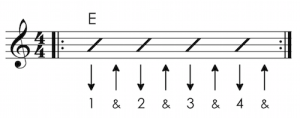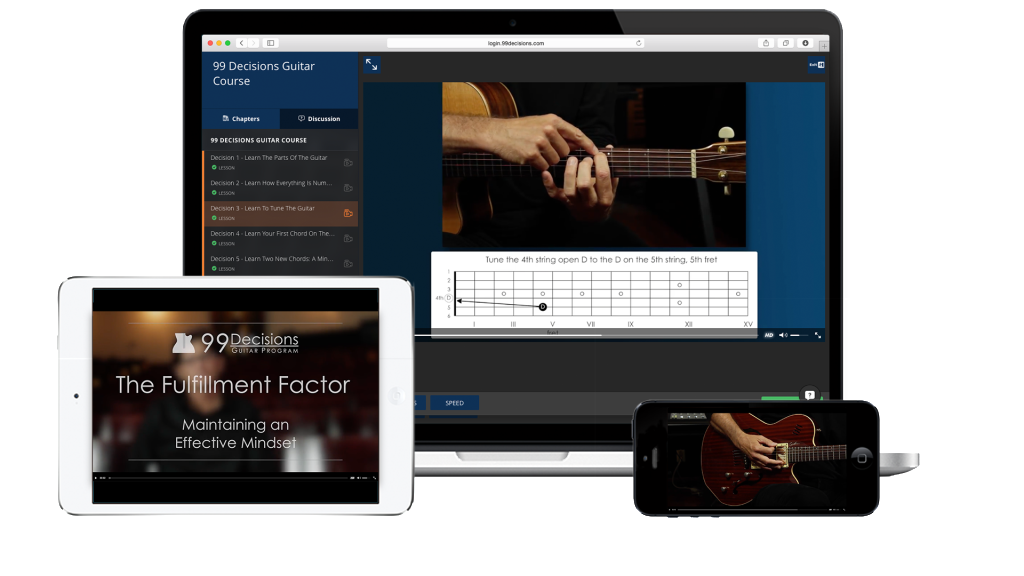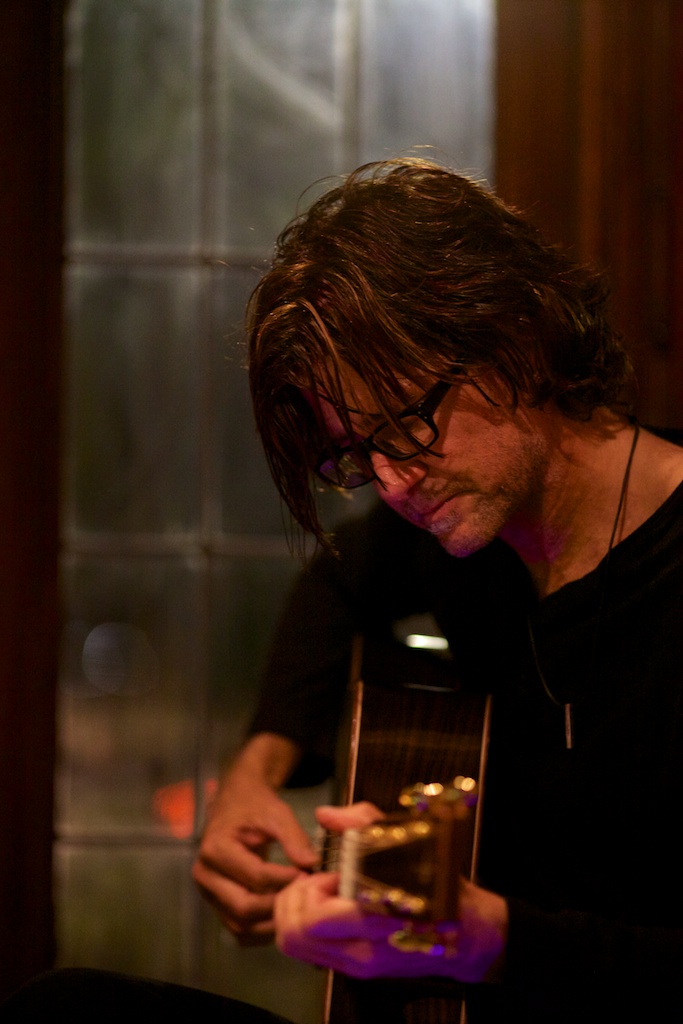Think about it… when people speak, the volume of their voice will change as a reflection of their emotional state.
(unless they’re trying to sound like a robot)
So why shouldn’t you play music in the same way?
Aren’t you striving to convey your emotions through your guitar playing? That’s what artists do, ya know.
It’s all about the dynamics.
The word dynamics, in a musical context, simply refers to volume.
And where volume gets interesting is when you change it!
It’s up to you to be in control of the fluctuation, or shift, between loud & soft… and soft & loud.. and everything in between.
I find it interesting that sometimes performers will play a song & it will be at the same volume level from beginning to end. Perhaps they are so involved in the technical aspects of playing, or maybe their singing, that they are distracted & don’t even realize that their performance is somewhat flat & uninteresting.
Dynamics give music an ebb & flow that makes it a more interesting & emotional experience for the listener. (And by the way, don’t forget that, as the performer, you are also one of the listeners)
Dynamics creates energy. It makes for a more stimulating experience. Music is vibration & vibration is energy & energy is what you have to put into the strings to play louder. Backing off the energy will make the sound softer.
Daniel Levitin, author of, This is Your Brain on Music, says, “Music is a series of violated expectations.”
And one way to use that notion to your advantage is to put in volume changes at various points in a song.
Think of it this way:
You are setting up the listener’s expectations if you play at a certain volume for an extended period of time (like, a verse, maybe). They will expect the music to continue at that volume. Then when you get to the chorus, you totally crank it up. After lulling the audience into a blissful state with some sensitive medium soft volume levels, you smack ‘em right in the ear drums with some high volume power chords! At the risk of overdoing it, this might be a good place to fire the confetti canons & set off the pyro. But that’s just how I would do it. Maybe. Except theres a lot of clean-up with the confetti. And your insurance goes way up when you use pyro.
But I digress…
This approach also works in reverse. After a considerable period of high volume assault, you can drop down to the level of pin drops being heard. This is a sure-fire way to get the audience’s attention. And for added entertainment, if someone is leaning over to yell into their friends ear right when the band’s volume drops, we all get to hear… “I SAID MY DATE IS REALLY BORING!”.
Obviously, the use of dynamics is a matter of taste. So make sure you have a clear idea of what you think is in good taste. A great way to do that is to observe how other musicians do it.
When you are listening to your favorite music, look for how the band, or artist, uses dynamics and what impact they have on the overall vibe & energy of the song. Check out how Nirvana used dynamics to make for a interesting ride in Smells Like Teen Spirit. The verses were subdued & the choruses totally kicked it. This is a common approach but don’t forget to look at other places you can add a volume increase, or decrease.
Try out different dynamics in your own playing. Experiment with putting volume changes in places where they aren’t so obvious.
Dynamics can be implemented in two ways:
• sudden shifts
• gradual shifts
Here’s a cool exercise to develop your awareness & technique with dynamics with sudden shifts…
– Hold an E chord, or any six string chord (so you don’t have to pay attention to strumming less than six strings).
– Take this simple strum pattern…

– Strum it for around 30 seconds at a really loud volume, then stop. (sorry neighbors!)
– Now do the same thing but at a really soft volume. (don’t wake the kittens!)
– Now do one bar of loud & one bar of soft.
Strive to make the volume change right on the first beat of each bar.
– Play it like this for about a minute, or two.
– Now do two beats of loud & one beats of soft
– Play it like this for about a minute, or two.
– Now do one beat of loud & one bar of soft
– Play it like this for about a minute, or two.
By toggling between discernibly different volumes like this, you will develop your ability to be in control of your dynamics. The key word here is discernible. For now, don’t be subtle… make the volume shifts noticeably louder or softer.
The next thing is to experiment with various less-disparate ranges of dynamics… meaning that you alternate between medium soft & medium loud… or medium loud & medium.
Remember, dynamics can be subtle & barely noticeable… or harsh & obnoxious.
How are you feeling today? Let your music show it.
* Note: You could also do this exercise while picking just one note on one string.
Now let us investigate gradual shifts of volume. This means that the fluctuation in volume occurs over an extended period of time.
I know you know they’ve got words for such things…
soft to loud = crescendo
loud to soft = decrescendo
I think we’ve all heard a fade out (decrescendo) at the end of a recording. And sometimes you’ll hear a fade in (crescendo) at the beginning of a recording. These things usually achieved electronically in the recording process.
But who’s to say you can do it live? It is a very effective method to create interest & drama in a performance. And, what about putting them elsewhere in a song. Your choice. You’re the driver here.
So try this…
– Like above, grab a six string chord & strum.
– Don’t stop.
– Gradually get louder.
– Now gradually get softer.
– Now gradually get louder.
– Now gradually get softer.
– I think you get the idea.
– Has it been, like, 10 minutes?
– Okay, you can stop now.
Learning how to effectively utilize dynamics when you play can quickly take your playing to the next level. You’ll be surprised at how fast you’ll start sounding like a more experienced & mature musician. The simplest of compositions can be made to be made to be significantly more interesting & enjoyable… simply by playing over a broader range of soft to loud and loud to soft.
No matter what level your guitar playing is at, start thinking of yourself as an artist… and subsequently, you’ll find yourself performing like an artist.
And artists emote through their art!
That’s what they do.



Leave A Response